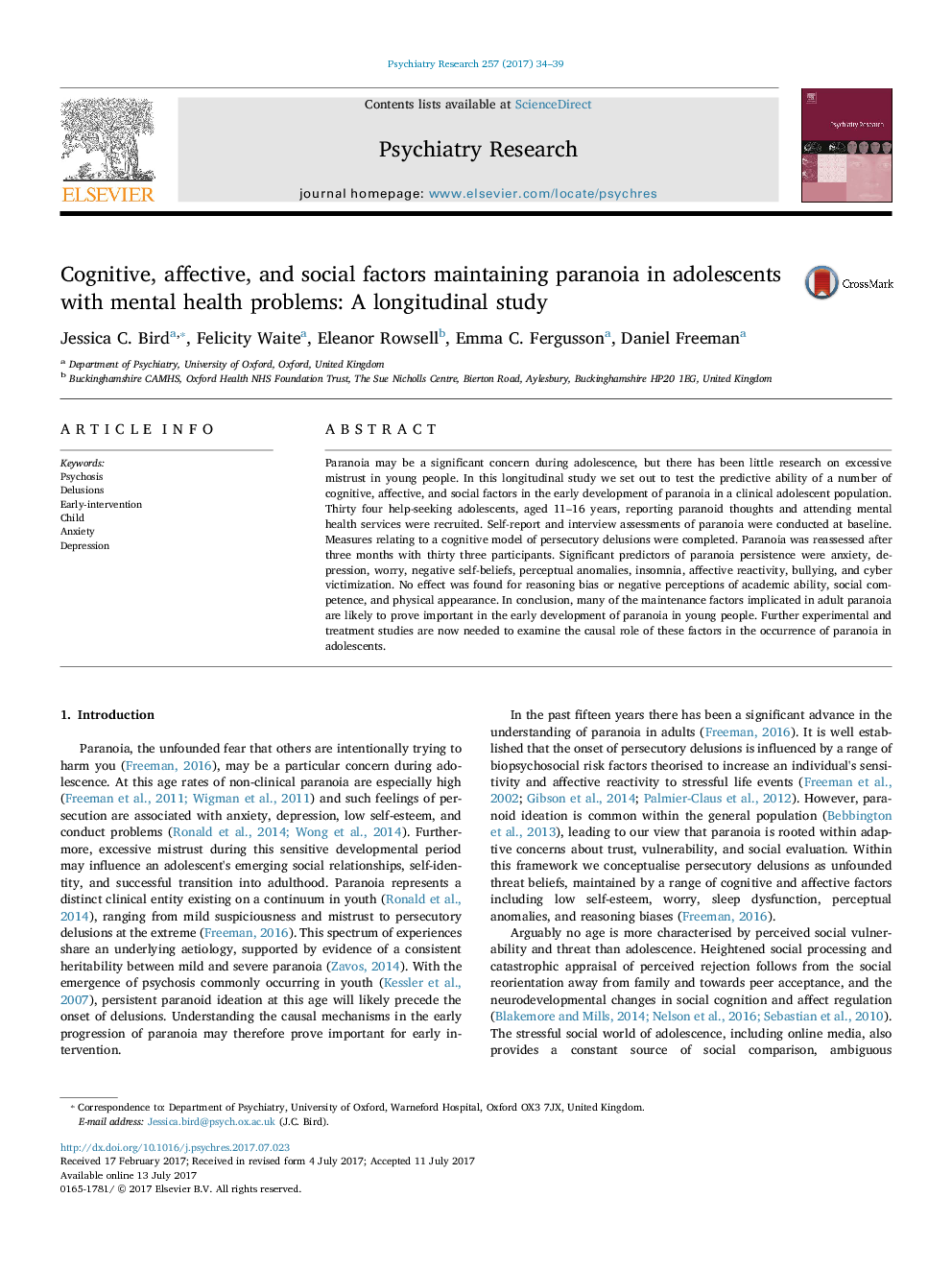ترجمه فارسی عنوان مقاله
عوامل شناختی، عاطفی و اجتماعی که پارانوای را حفظ می کنند در نوجوانان با مشکلات سلامتی روانی: یک مطالعه طولی
عنوان انگلیسی
Cognitive, affective, and social factors maintaining paranoia in adolescents with mental health problems: A longitudinal study
| کد مقاله | سال انتشار | تعداد صفحات مقاله انگلیسی |
|---|---|---|
| 117582 | 2017 | 6 صفحه PDF |
منبع

Publisher : Elsevier - Science Direct (الزویر - ساینس دایرکت)
Journal : Psychiatry Research, Volume 257, November 2017, Pages 34-39
ترجمه کلمات کلیدی
روانپریشی اتهامات مداخله زودهنگام، کودک، اضطراب، افسردگی،
کلمات کلیدی انگلیسی
Psychosis; Delusions; Early-intervention; Child; Anxiety; Depression;

